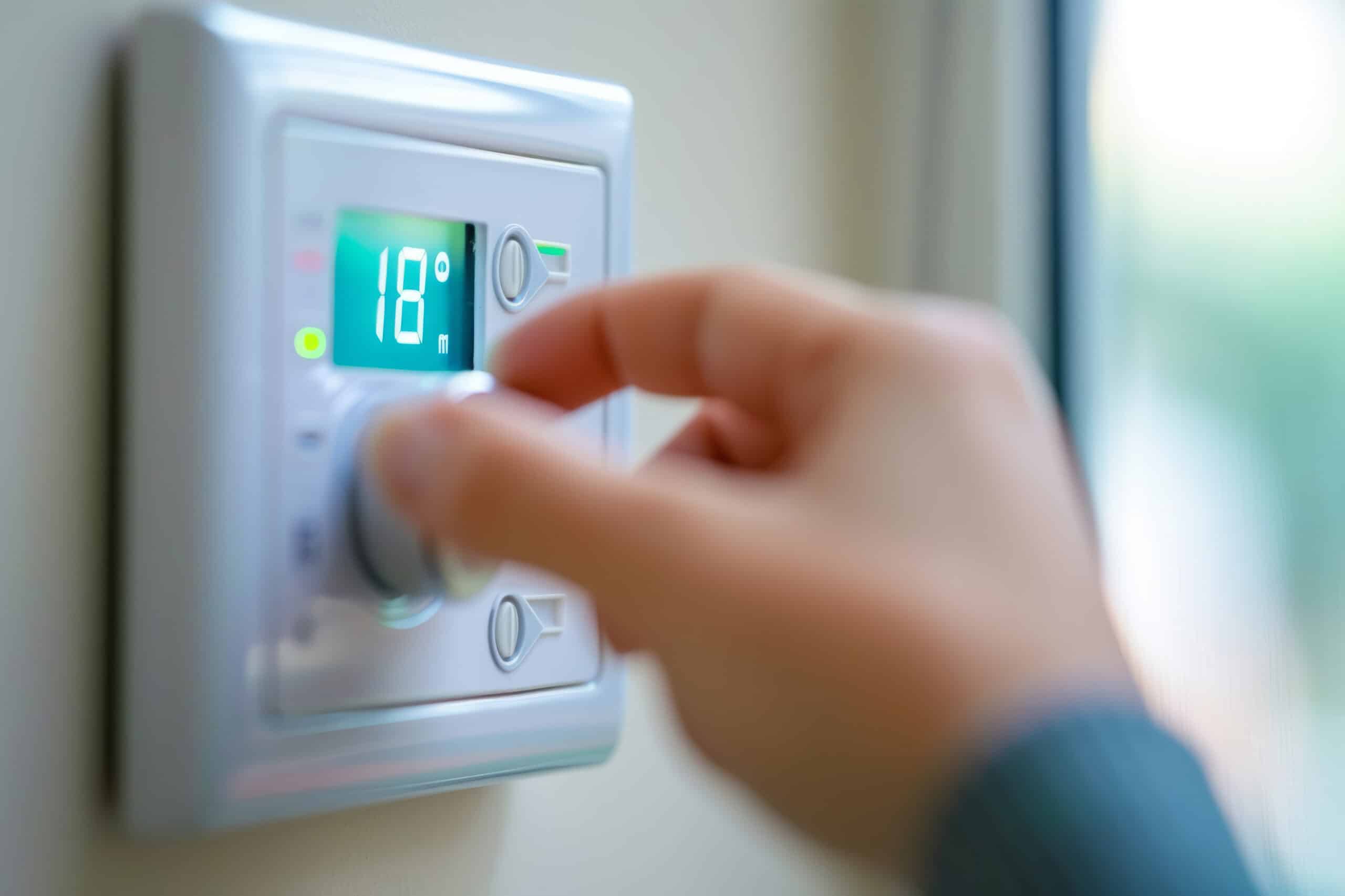| Key Takeaway: Emergency heat, also known as EM heat or EMH on a thermostat, is used as a backup heating source in heat pump systems when the primary system cannot meet heating demands. It is crucial during extremely cold weather or if the heat pump malfunctions. Homeowners should use emergency heat during severe cold snaps or system malfunctions to ensure continued warmth and safety. |
Winter can be harsh, and during these times, having a reliable heating system is crucial. Emergency heat plays a vital role in ensuring comfort when temperatures plummet. This feature is particularly important in HVAC systems that use heat pumps. But what is emergency heat, and why is it so important? Essentially, emergency heat acts as a backup heating source when the primary system can’t keep up with the demand.
Understanding what emergency heat is helps homeowners make informed decisions about their heating systems. This article will explore the concept of emergency heat, how it functions, and when to use emergency heat effectively. Knowing these details ensures that your home remains warm and safe, even in the most challenging weather conditions.
In the following sections, we will delve deeper into the workings of emergency heat, its settings on your thermostat, and the scenarios that necessitate its use. By the end of this article, you will have a clear understanding of when to use emergency heat and how it can benefit your home during winter.
Understanding Emergency Heat
Emergency heat, often abbreviated as EM heat or EMH on thermostats, is a secondary heating option in heat pump systems. It activates when the primary heat pump cannot efficiently warm the home. This setting is crucial during extremely cold weather or when the heat pump malfunctions, ensuring that your home remains comfortable.
The EM/EMH settings on a thermostat differ from standard heat settings. While standard settings rely on the heat pump’s ability to extract heat from the outside air, emergency heat uses an alternative heat source, like electric resistance heaters or a gas furnace. This switch is automatic in some systems, but in others, it requires manual activation by the homeowner.
Understanding when emergency heat kicks in is essential for homeowners. It typically activates when the outside temperature drops significantly, or if the heat pump is unable to meet the thermostat’s set temperature. This ensures that your home stays warm, even when the primary system struggles.
When to Use Emergency Heat
Knowing when to use emergency heat is crucial for maintaining home comfort and safety. Extreme weather conditions, such as severe cold snaps, often necessitate the use of emergency heat. During these times, the heat pump may struggle to extract enough warmth from the outside air, making the backup system essential.
System malfunctions also indicate a need for emergency heat. If your heat pump fails or requires repair, switching to emergency heat ensures continued warmth. Signs that you should switch include the heat pump running continuously without reaching the desired temperature or unusual noises coming from the system.
Another scenario that might require emergency heat is when your furnace keeps tripping the circuit breaker. This could indicate an issue with the primary heating system, making the backup option necessary. By recognizing these signs, you can ensure your home remains comfortable and safe during winter.
Important Facts About Emergency HeatEmergency heat plays a vital role in our homes, especially during harsh winter months. Understanding its functions and uses can keep us safe and warm. Here are some key facts about emergency heat:
|
Benefits of Emergency Heat Settings
Emergency heat settings offer several advantages, particularly when the primary heating system fails. One of the main benefits is the ability to provide backup heating during unexpected system malfunctions or severe weather conditions. This feature ensures that homeowners are not left in the cold when their main heating source is compromised.
Another significant advantage is the peace of mind that comes with knowing you have a reliable fallback option. During unexpected cold snaps, having emergency heat available means you can maintain a comfortable indoor temperature without worrying about the primary system’s reliability. This assurance is invaluable, especially in regions prone to harsh winter conditions.
Moreover, emergency heat settings can be a lifesaver in situations where immediate heating is necessary. By providing a quick and efficient heating solution, these settings help prevent potential damage to the home and ensure the safety of its occupants. Understanding HVAC safety tips can further enhance the effectiveness of using emergency heat.
Potential Drawbacks of Using Emergency Heat
While emergency heat settings are beneficial, they come with certain drawbacks. One of the primary concerns is the higher energy consumption associated with using emergency heat. This increased usage can lead to significantly higher utility bills, making it a costly option if used for extended periods.
Another consideration is the potential impact on the longevity of your HVAC system. Frequent reliance on emergency heat can strain the system, leading to more frequent maintenance needs and possibly reducing the overall lifespan of the equipment. Understanding HVAC efficiency metrics can help homeowners make informed decisions about when to use emergency heat.
Additionally, using emergency heat requires careful attention to maintenance. Regular system checks and timely repairs are crucial to ensure that the emergency heat setting functions properly when needed. Neglecting these maintenance tasks can lead to system inefficiencies and unexpected breakdowns.
Emergency Heat vs. Regular Heat
Comparing emergency heat to regular heat pump operations reveals distinct differences in functionality and efficiency. Emergency heat settings are designed to provide immediate and robust heating, often relying on electric resistance heating, which is less efficient than regular heat pump operations. This difference in efficiency can lead to increased energy consumption and higher costs.
Regular heat pump settings, on the other hand, are optimized for energy efficiency, using the heat pump’s ability to transfer heat from the outside air to the inside of the home. This process is generally more cost-effective, especially in milder winter conditions. Understanding the key differences between forced air and heat pump systems can help homeowners choose the best option for their needs.
When deciding between emergency heat and regular heat, it’s important to consider the specific circumstances. Emergency heat is best reserved for extreme conditions or when the regular system is not functioning properly. In contrast, regular heat settings should be used whenever possible to maintain efficiency and manage costs effectively.
Troubleshooting Common Issues with Emergency Heat
When using emergency heat, homeowners may encounter common issues that require troubleshooting. One of the first steps in addressing these problems is to identify any unusual noises or performance issues that may indicate a malfunction. Regular maintenance is crucial in preventing these issues and ensuring that the system operates smoothly.
Another common problem is the failure of the emergency heat setting to activate when needed. This issue can often be resolved by checking the thermostat settings and ensuring that the EM/EMH setting is correctly engaged. For more detailed guidance, homeowners can refer to an HVAC troubleshooting guide.
Lastly, it’s essential to conduct regular inspections and maintenance to prevent emergency heat issues. By keeping the system in good working order, homeowners can avoid unexpected breakdowns and ensure that their emergency heat setting is ready to provide warmth when needed. Regular maintenance checks can also help identify potential problems before they become significant issues.
Emergency Heat FAQs
What is emergency heat, and how does it differ from regular heat?
Are there any risks associated with using emergency heat?
Can emergency heat be used continuously?
How can I tell if my system is running on emergency heat?
What should I do if my emergency heat isn’t working?
Mastering Your HVAC System
Understanding how to manage your HVAC system is crucial, especially when temperatures drop. Emergency heat serves as a safeguard when your regular heat pump system can’t keep up or fails. Knowing how to use emergency heat efficiently can save you from discomfort during the winter months.
Emergency heat acts as a reliable backup. It’s important to know the right time to switch it on. During severe cold or if your system malfunctions, it ensures your home remains warm. Yet, this setting isn’t free of drawbacks. It consumes more energy, resulting in higher bills. Regular use of emergency heat can also strain your HVAC system.
By understanding the differences between emergency heat and regular heat, you make informed decisions. Regular heat is energy-efficient and cost-effective for day-to-day use. Emergency heat, however, should only serve as a temporary fix. Frequent reliance on this setting may require more repairs and maintenance over time.
Maintaining your HVAC system helps prevent emergency heat issues. Regular checks extend your equipment’s life and ensure it runs efficiently. A well-maintained system minimizes the need for emergency heat, reducing unexpected costs and disruptions.
In summary, knowing when to switch on emergency heat can keep your home comfortable and prevent more significant issues. By understanding the benefits and drawbacks, you can decide when it’s necessary to use this feature. Keeping your HVAC system in top shape is key to avoiding frequent use of emergency heat, and it helps you save money in the long run.
Next Steps to Keep Your Home Cozy This Season
Knowing how and when to use your emergency heat setting is vital for comfort and safety. This knowledge keeps your home cozy during winter while managing energy costs. Always consult with HVAC experts for tailored advice and system checks. Their insights ensure your system operates efficiently, reducing the chance of needing emergency heat.
For more information about HVAC systems or to schedule a maintenance check, Contact River Valley AC. Our professionals are ready to assist you with your heating needs. Don’t wait for winter’s chill to surprise you. Reach out today and keep your home warm and safe.
Further Reading |

